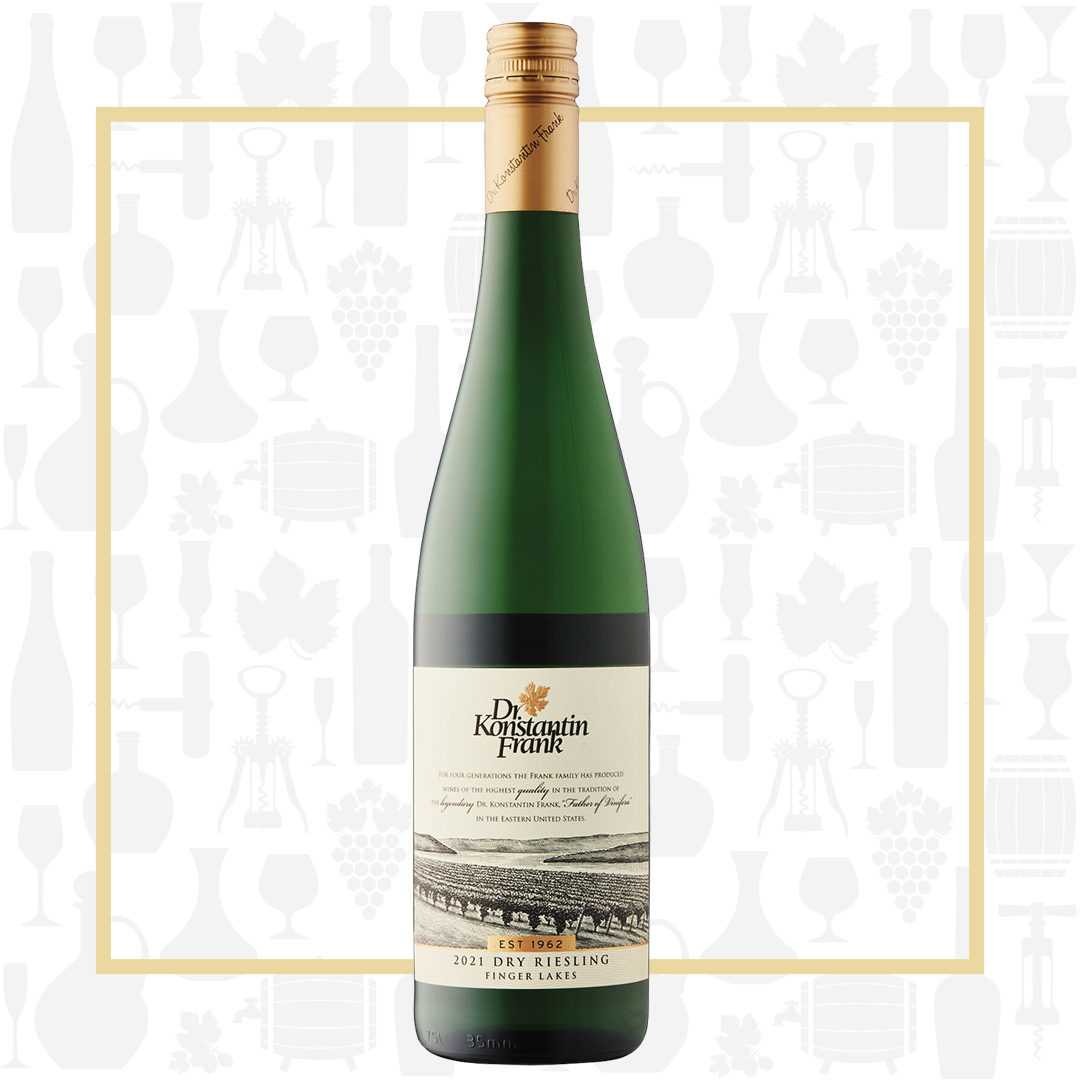Cellar Profile
Konstantin Frank arrived in New York from Ukraine in 1951. A PhD holder in viticulture and doctor of plant sciences, Frank was the first to experiment with vitis vinifera in the state, where plantings had been confined to vitis labrusca and Concord varieties. Situated at the heart of the Finger Lakes region, on the southwestern hills surrounding Keuka Lake, the winery has a collection of old vine plantings that few others in North America can rival. The work is done in the vineyard, with a very deft touch by the winery, focusing on food-worthy, lively wines of elegance and depth, wines that keep the palate fresh, inviting another sip. Grapes are sourced primarily from the original estate Keuka Lake vineyards, where shale soils provide minerality and acidity, but also from Seneca Lake vineyards, which are warmer, imparting more weight and upfront fruit.
Region
The Finger Lakes region of New York State is an exciting, emerging area for cool climate wines of freshness and elegance. Despite its relative anonymity, this American Viticultural Area (AVA) was established in 1982, more than 40 years ago! Less than a 5 hour drive from both Toronto and New York City, this bucolic area is now home to over 160 wineries. Grapes here range from the obscure (Rkatsiteli) to the familiar (Riesling) and plenty in between. Regardless of the variety, the wines all exhibit Old World freshness, bright flavours and elegant structures that are perfect accompaniments to a wide variety of foods and festivities. The slate soils are perfect for working with Riesling and the region’s dry versions are fast becoming the darlings of wine critics.
Vineyard
Sourced primarily from the original Keuka Lake estate vineyard (plantings in ’58, ’74, ’81 and ’86) with a smaller amount of fruit coming from the Seneca Lake site. The Keuka Lake shale-based soils provide minerality and acidity. The Seneca Lake vineyards, with their silty loam soils and warm mesoclimate, add warmth and upfront fruit flavours.
Winemaking
The grapes are hand-harvested at full phenolic ripeness (less about the sugar here, more about flavonoids). Destemmed and pressed into stainless steel, the wine is allowed to age on its lees for 5 months to gain added complexity.
Varieties
One of the wine world’s great white grapes, Riesling is best grown in cooler climates where it thrives from a long, slow growing season that develops its intense aromatics and renowned acidity. It is home in Germany but is also grown successfully throughout the wine world, notably in the Alsace region of France, cooler areas in Australia and South Africa and, of course, here in Ontario. Styles vary according to site and producer, from sweet and fruity to bone-dry, austere and everything in between.
Tasting Notes
A classic Riesling nose, with plenty of tart apple and lemon-lime citrus. There is also a definite petrol note that lets you know this will be a drier style. The acid is incredibly zesty, mouthwatering and tingly. The nose replays on the palate with a generous dollop of salty minerality. Chill this down and enjoy with sushi, Gorgonzola or sipped on a hot summer day.

